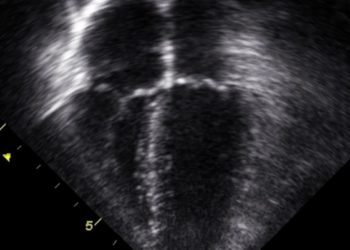Hospital Readmissions Reduction Program associated with increased 30-day post-discharge mortality for heart failure and pneumonia
1. In this retrospective cohort study, implementation of the Hospital Readmissions Reduction Program (HRRP) was unexpectedly associated with an increase in 30-day post-discharge mortality for heart failure and pneumonia but not for acute myocardial infarction.
2. There was a lack of association between the HRRP implementation and 45-day post-discharge mortality.
Evidence Rating Level: 2 (Good)
Study Rundown: The Hospital Readmissions Reductions Program (HRRP) was established under the Affordable Care Act in 2010, implemented in 2012, and imposed financial penalties on hospitals that had higher-than-expected 30-day readmission rates for patients with heart failure (HF), acute myocardial infarction (AMI), and pneumonia. However, it was unclear if the program would lead to more careful discharge planning and better discharge outcomes. In this retrospective cohort review, patients with HF and pneumonia had increased 30-day post-discharge mortality after both announcement and implementation of the policy than before. Among patients with AMI, 30-day post-discharge mortality declined after the announcement and remained stable after implementation. No significant associations between HRRP and 45-day post-discharge mortality were found for any of the subpopulations.
Overall, the study shows surprising results whereby, in an attempt to lower readmission rates, HRRP may have resulted in increased mortality. However, it is unclear why the 30-day but not 45-day time point was associated with increased mortality, and the limitations of the study as a retrospective cohort may have contributed to this unexpected finding. Further research is needed to truly understand if the effects were a result of this policy.
Click to read the study, published today in JAMA
Relevant Reading: Hospital Readmissions Reduction Program
In-Depth [retrospective cohort]: This study utilized Medicare Provider Analysis and Review files to identify hospital admissions and discharges at short-term acute care hospitals from April 1, 2005, through March 31, 2015. Medicare beneficiaries aged 65 years or older with a principle discharge diagnosis of heart failure (HF), acute myocardial infarction (AMI), or pneumonia were evaluated. The study identified 4 study periods of equal duration for the index hospitalization. These were non-overlapping periods and included the following: two periods before Hospital Readmissions Reduction Program (HRRP) announcement (period 1, April 2005-September 2007 and period 2, October 2007-March 2010), a period after HRRP announcement (period 3, April 2010-September 2012), and a period after HRRP implementation (period 4, October 2012-March 2015). Primary outcomes included 30-day post-discharge patient mortality for HF, AMI, and pneumonia. For patients with HF, post-discharge mortality increased before announcement (0.27% increase from period 1 to period 2), with announcement (0.49% increase from period 2 to period 3; P = 0.01), and after implementation of the policy (0.52% increase from period 3 to period 4, P = 0.001). Among patients with pneumonia, post-discharge mortality increased both with announcement (0.04% increase from period 1 to period 2) and implementation of the policy (0.44% post-HRRP implementation, P < 0.001). Finally, among patients with AMI, 30-day post-discharge mortality declined with announcement (0.18% pre-HRRP increase vs 0.08% post-HRRP announcement decrease, P = 0.01%), and remained stable after implementation. There were no significant associations for the 45-day time point (p > 0.05).
Image: PD
©2018 2 Minute Medicine, Inc. All rights reserved. No works may be reproduced without expressed written consent from 2 Minute Medicine, Inc. Inquire about licensing here. No article should be construed as medical advice and is not intended as such by the authors or by 2 Minute Medicine, Inc.







